Hi there! I’m glad that you accepted my friend request!
Can’t wait to share about my life in Pune with you
Awesome. I’m excited to find out more
You’ve come at the right time. My classes for the day just got over, so I’m about to meet some friends
Sounds good!
Let me first show you around my college...
“Here in college the signal is better than many parts of the city, so my friends and I meet here to share hotspots with each other from our phones. One needs friends in Pune to stay online!”
These are some of my friends. They are crazy, just like me!
Nice to meet you all How often do you guys meet?
We meet in college everyday... even when we don’t have class!
How come?
I come from a poor neighbourhood where the internet connection is not so good. Here it is better
Are there no free WiFi hotspots around?
Well... there are lots of fancy coffee shops. But normally we do not go to these kinds of places. It is simply too expensive for us
“Here one order of cutting chai (half portion) is only ten rupees. We cannot make it through the day without a piping hot cup of masala chai!”
Internet Connection
Coffee shop franchises and fast food outlets have become an increasingly common fixture in India’s urban landscape since the liberalisation of the country’s economy in 1991.
Armed with free WiFi, they offer a respite from the often unreliable and patchy internet connectivity of outdoor spaces.
These venues however attract a specific clientele – one that is typically affluent, elite and English-speaking – a tiny fraction of the city’s population.
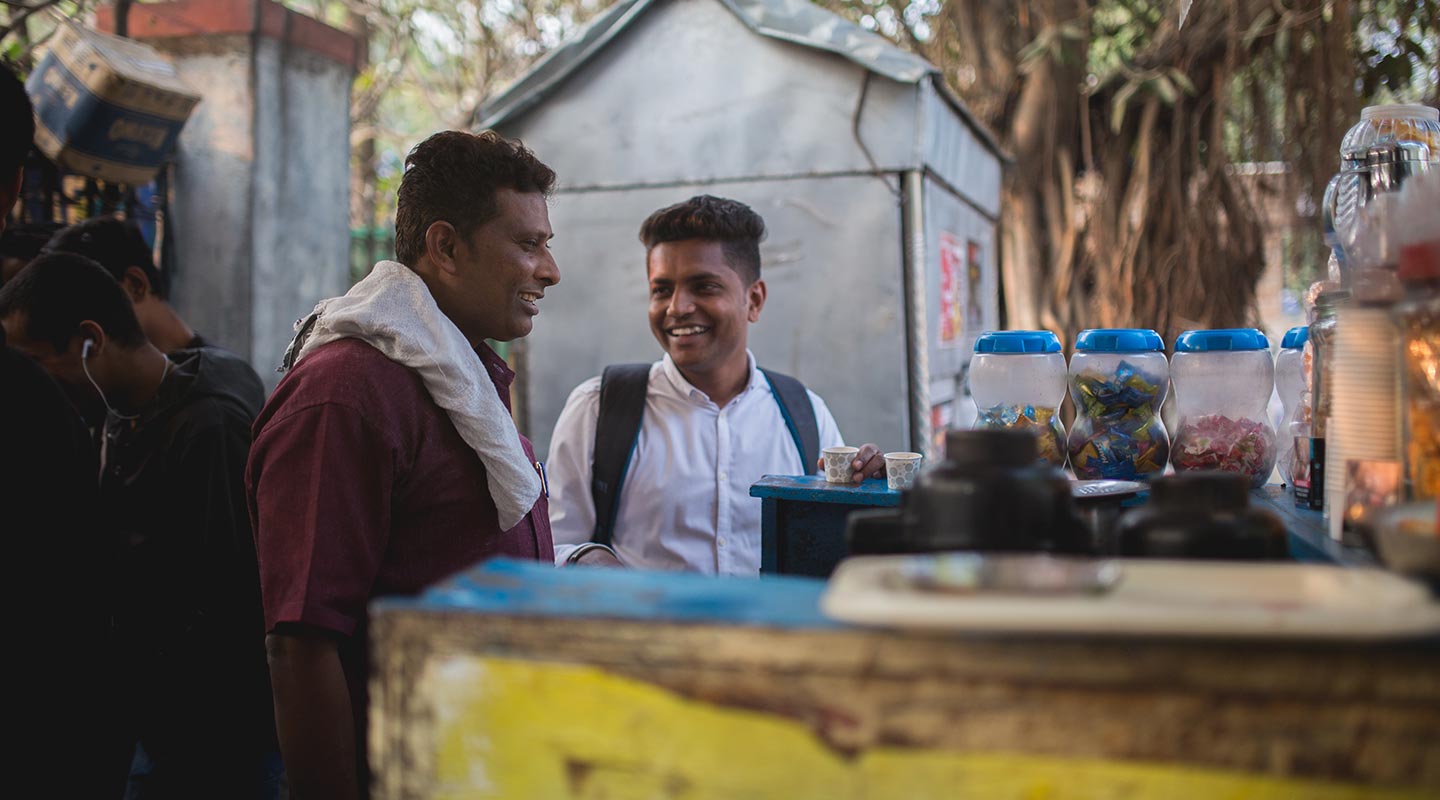
Most middle class youth in Pune on the other hand live on roughly $2 - $4 per day. 1
Many have never been to a coffee shop or a pizza parlour.
Most do not own cars, computers or credit cards.
Economically priced out and excluded from newer establishments in the city that offer free WiFi, they stake out more creative ways of going (and staying) online for long periods of time.
1 A 2017 study found that the lower middle class make up two-thirds of India's middle classes (Krishnan, Sandhya and Hatekar, Neeraj (2017): "Rise of the New Middle Class in India and its Changing Structure", EPW, Vol 52, No 22, pp 40-48).
A particularly common solution is for friends to share their mobile data connections with each other.
Like the habitual sharing of cups of tea, cigarettes and snacks, the sharing of the internet forms a new ritual of friendship.
Time to take a selfie so I can make my other friends jealous
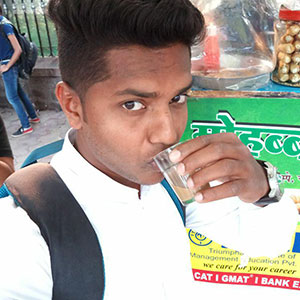
What do you think of my selfie?
Looking good with your cup of tea!
Thanks! You gotta like my photo later! And comment with the word ‘kadak’. It’s the local slang for ‘awesome’
Where will you post your picture?
On Facebook of course! That is where we all post only. Remember to like it later
I also just joined Instagram and Snapchat, you can add me there too
The Selfie
In India, the selfie has taken on epic proportions.
Splashed across billboards and shop windows are images of Bollywood stars and sporting icons inviting you to enter a world of digital possibilities through the selfie. Even the Prime Minister’s fondness for the selfie is well known.
For young people in Pune, the selfie is a far more precarious space.
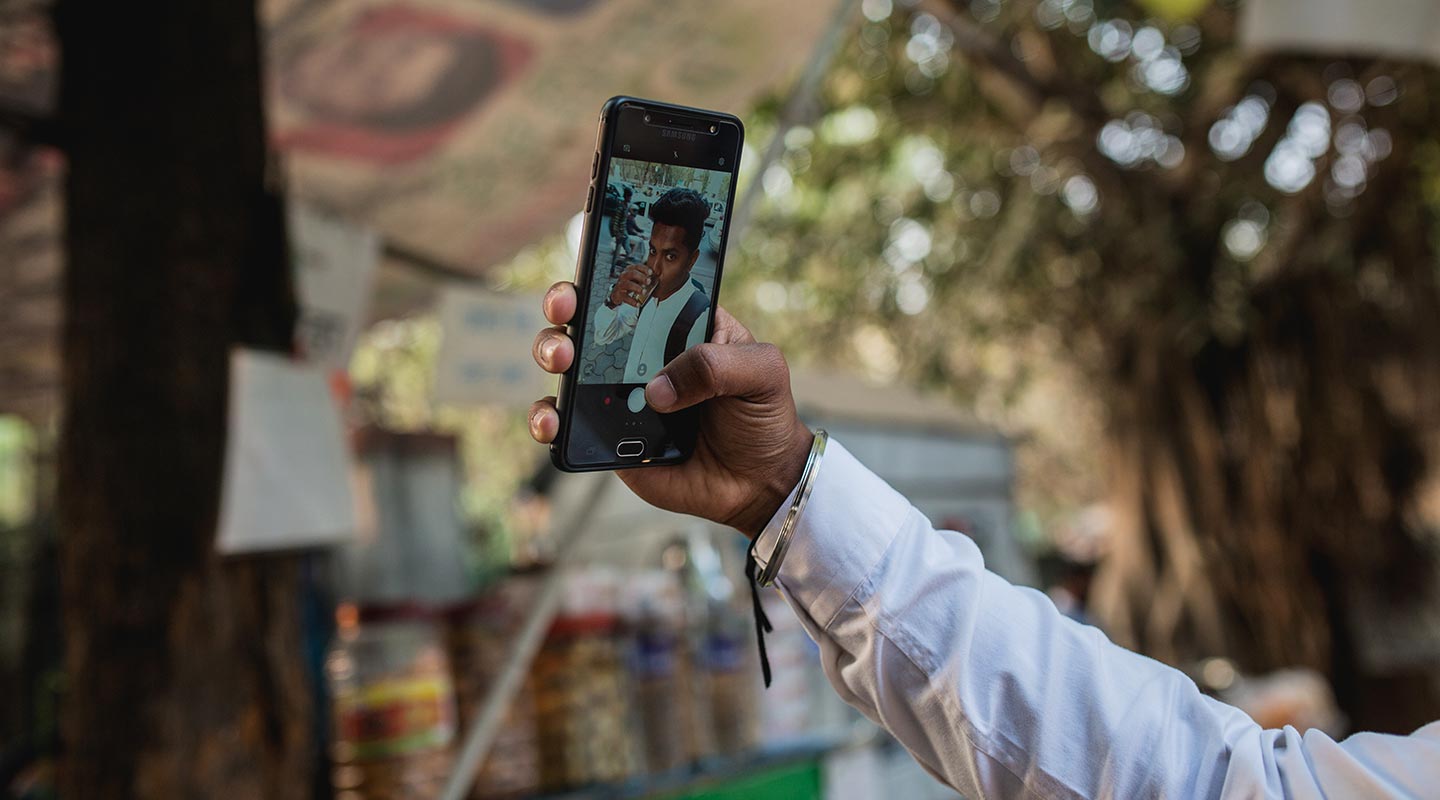
They are quick to judge each other based on their selfies. The selfies of upper middle class youth feature cafes, pubs and nightclubs as backdrops.
For lower middle class youth unable to access these spaces, they commonly pose on their motorbikes - their most prized possession and often their only means of transport.
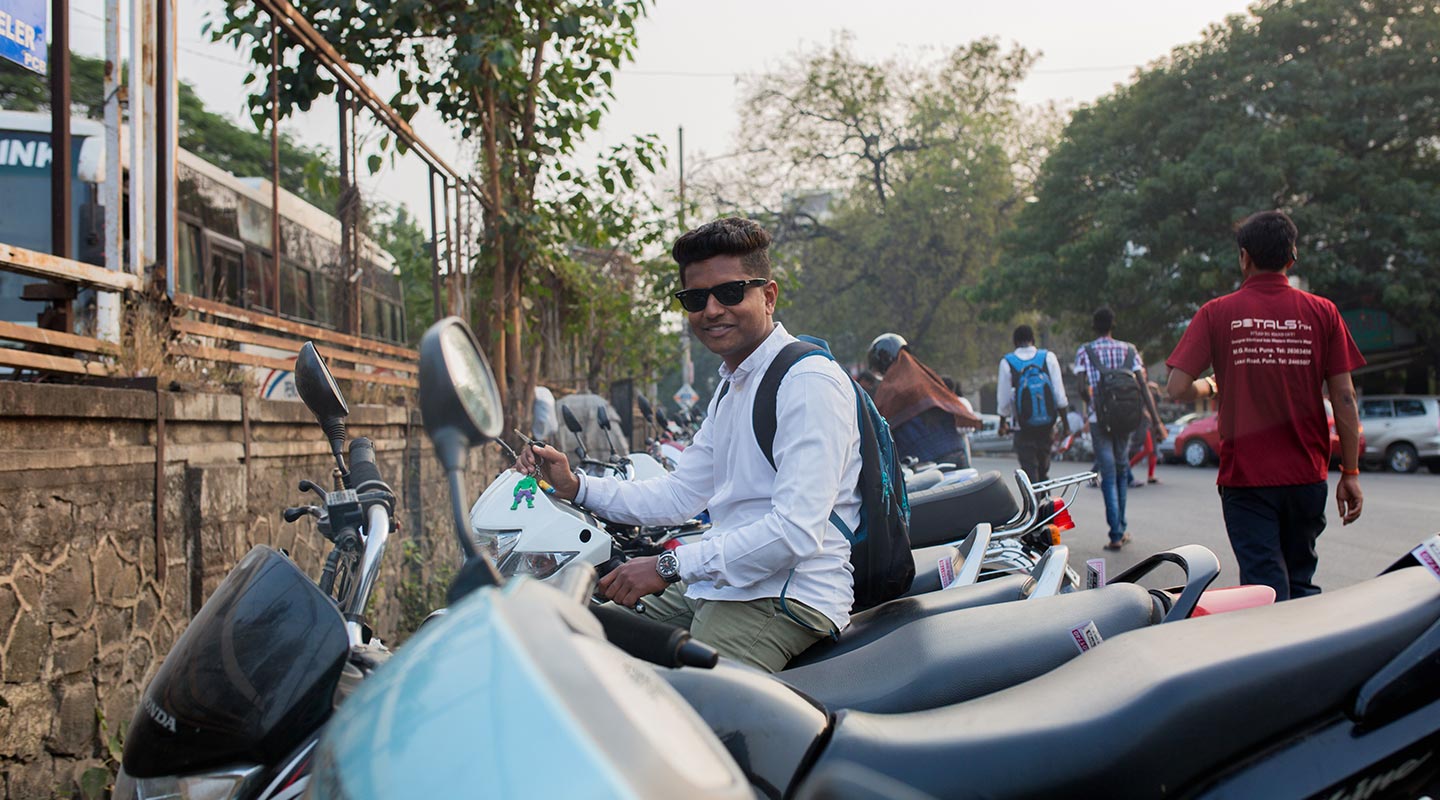
They also turn the selfie into a visual spectacle, adding emojis, multiple filters and pixelated backgrounds, sometimes even replacing them to feature entirely new ones.
By making their digital manipulation explicit, they, too, mould themselves into modern, tech-savvy Indians.
I’ve just realised some other friends are in the area! Let’s join them
Oh, how do you know that?
They just checked in on Facebook at a shopping mall not too far from here
Here, I can show it to you on the map...

Are they buying something there?
No. We go to the mall to do timepass only
Timepass?
Doing nothing… just hanging out!
Check In
The worldwide proliferation of social media has sparked fears that young people are becoming increasingly socially isolated and prone to depression, forgoing physical friendship for chatting online from the confines of their bedrooms.
Sherry Turkle, professor at MIT, predicts that mobile phones are making us “alone together”. 2
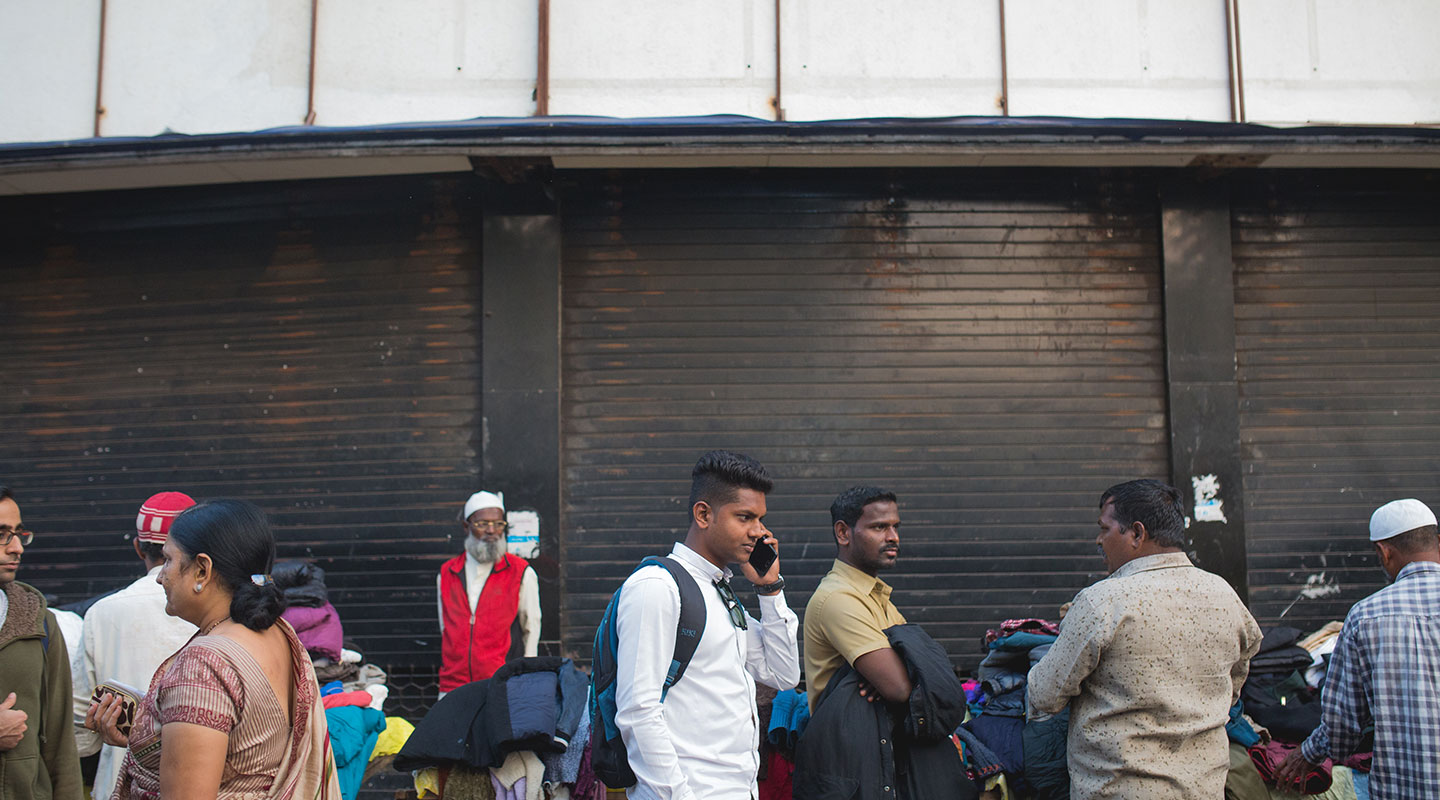
In Pune, youth rarely use social media in isolation.
Rather, they go online to spark offline social interaction, often ‘checking in’ at various locations on Facebook to see if any friends are nearby with whom they can meet.
As they leave behind their digital traces online, these become markers for their friends online to locate them in real time.
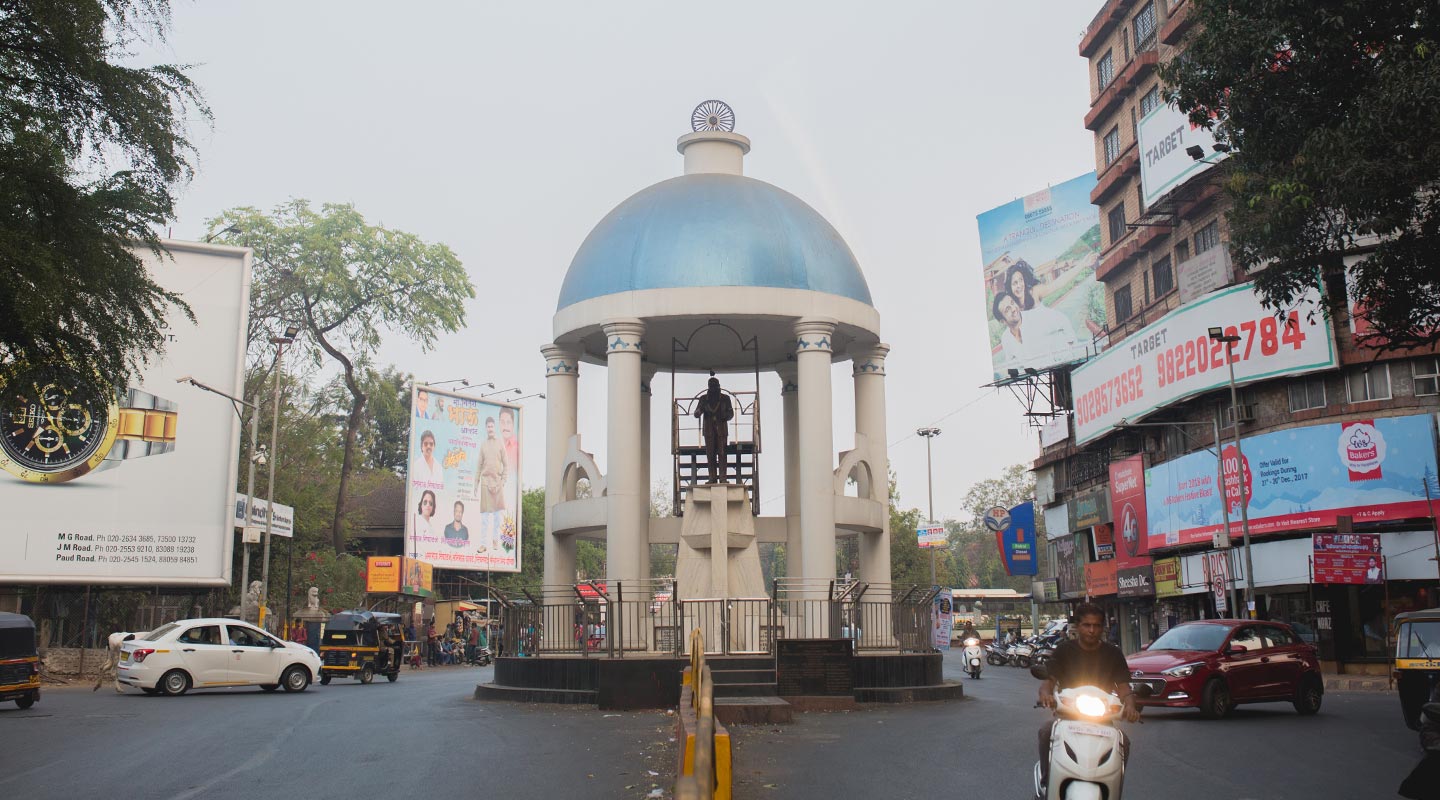
Checking in, however, is about more than just finding friends; it is also about reimagining the city as filled with endless fun.
Like many other cities in India, processes of gentrification and the creation of spatial enclaves in Pune produce further divisions between rich and poor.
2 Turkle, Sherry (2011): Alone Together: Why We Expect More from Technology and Less from Each Other, New York: Basic Books.
In contesting their marginalisation, lower middle class youth digitise their own spaces of friendship, such as chai tapris (tea stalls) and dhabas (roadside food joints).
By creating their own map of Pune online, they make visible the city they have always known.
My friend just posted a profile picture on Facebook and he tagged 80 friends in it… including me!
That’s a lot of people in one photo!
Haha but I'm actually not in it
He tagged all of us so that we will like it
Are likes that important?
People here judge you a lot based on how many likes you have. Some even add fake friends online just to get more likes!
"People here are hungry for ‘likes’. They will post all sorts of things. But if I post something bad online, my real friends will tell me the truth. They will say ‘this is not good’."
Tagging
The term jugaad, a uniquely Indian approach to making use of limited resources through shrewd improvisation, characterises everyday life in Pune.
Taking jugaad into the online space, youth improvise new ways of handling digital technologies such as ‘tagging’ on Facebook to achieve their objectives of accumulating ‘likes’.
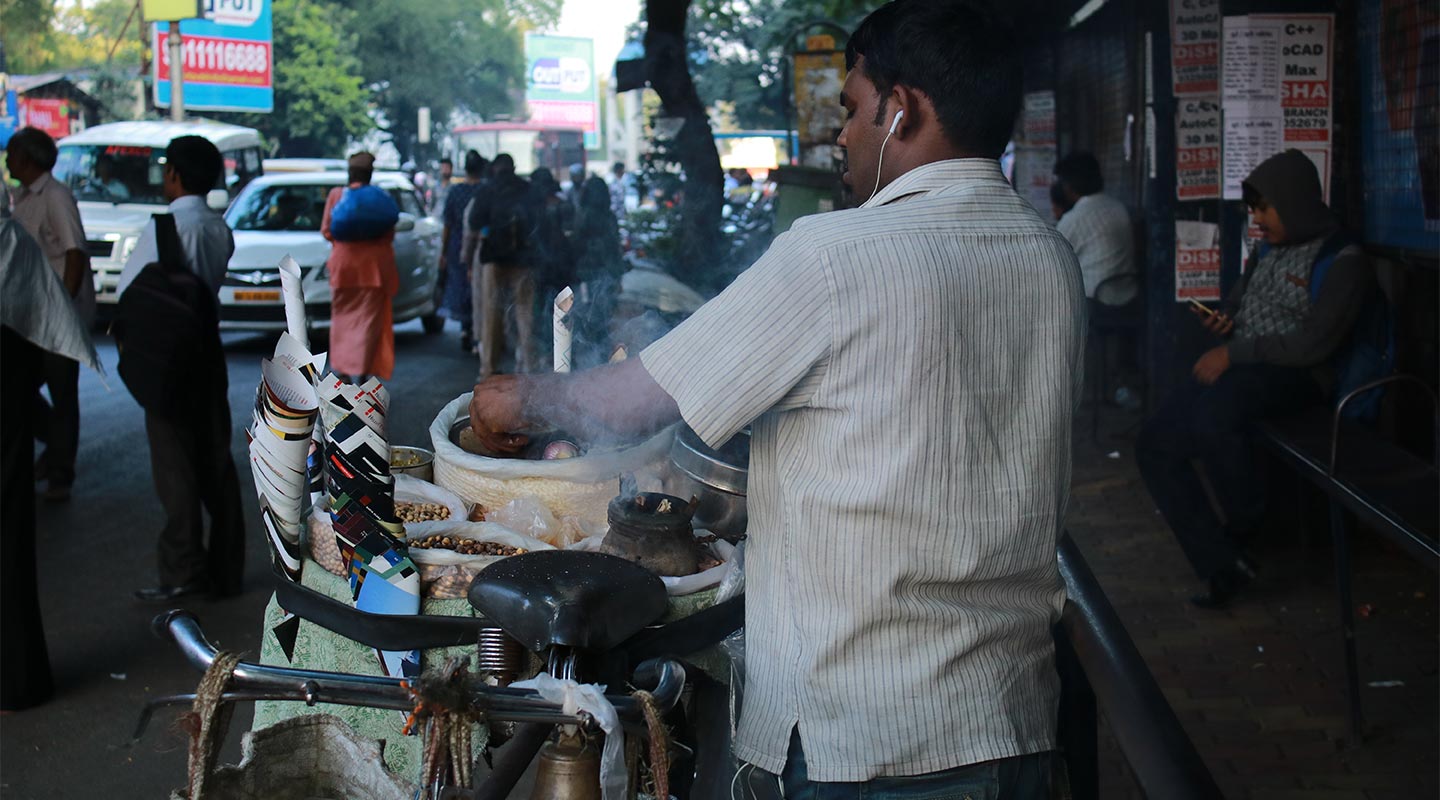
Many young people in Pune tag dozens of friends (sometimes even seventy or eighty at a time) in status updates and photos, turning the tag feature into a distinctly social tool.
By tagging numerous friends, they ensure their photos cut through the queue of Facebook’s never-ending stream of newsfeed activity, landing directly onto the timelines of their friends.
It’s getting late, I should probably head home
Why don’t you come over for dinner?
Ah! I’d love to, but I need to catch the train to Mumbai tonight
What time is your train?
I’m not too sure
I’m trying to check the timings online but the internet is really slow at the moment
No tension! We can do it later. The connection will be faster then
Let me drop you to the station
“My friends and I prefer to go online at night. Less people in the city are awake so the speed is faster. For us, that is when the internet comes alive.”
Internet Speeds
In comparison to the global average internet connection speed, India’s is relatively low, ranking 89th in the world.
To combat slow internet speeds during the day, many young people in Pune access the internet during the early hours of the morning when the rest of the city is asleep.
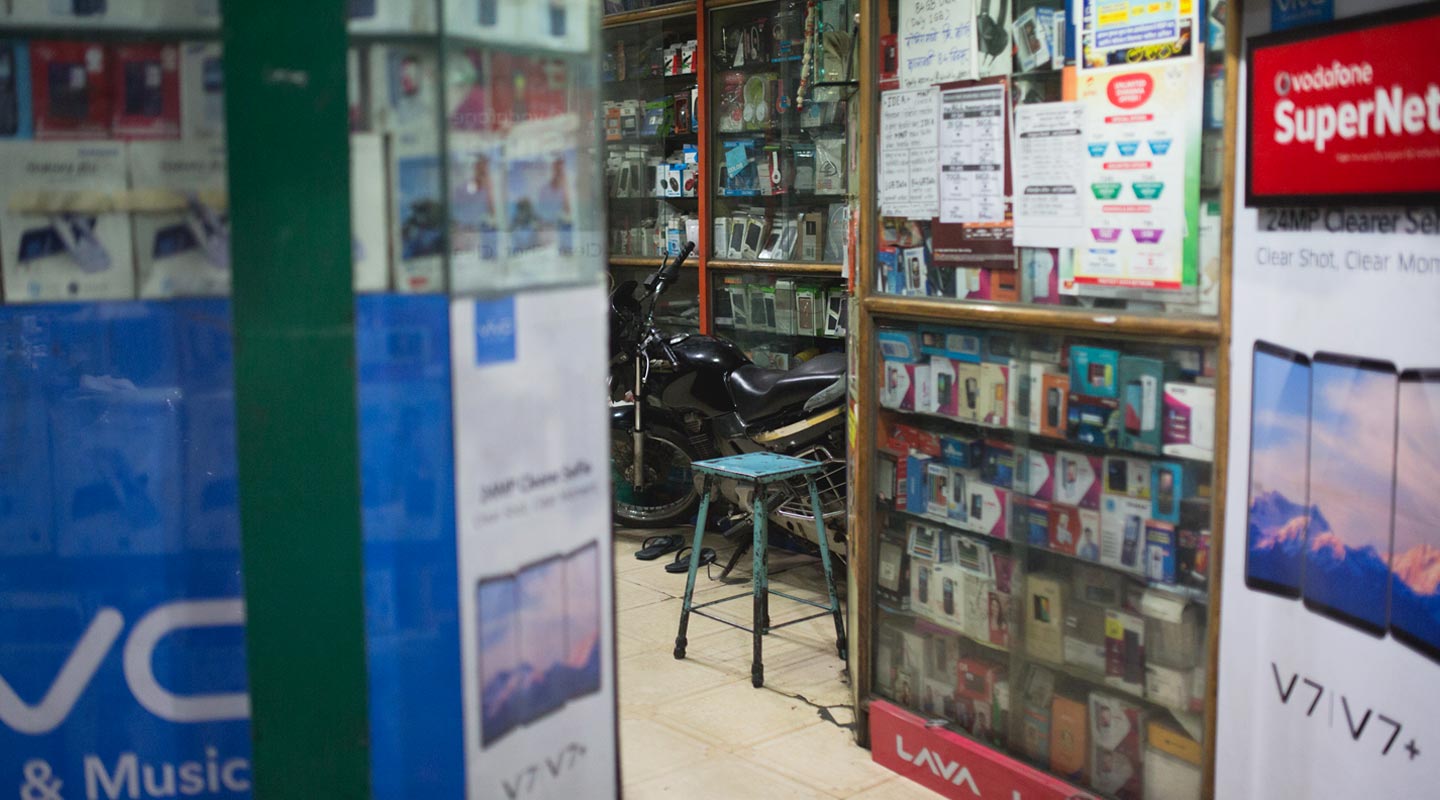
By navigating their way around the online crowd of the city during the day to go on social media at night, young Punekars inscribe new time zones of friendship into the city.
Paying attention to the daily ebbs and flows in online traffic, they become attuned to the rhythms of the city.
Thank you so much for showing me around Pune. If only I had more time!
Arre. No formalities with friends. Have a safe journey and stay in touch
Of course. I’ll send you a postcard once I get to Mumbai
Haha. Send me a selfie instead!
Rohan has left the conversation
In 2017, Pune was announced as the first city in the world where Google would deploy Google Station, providing high speed internet access in public areas.
For young people like Rohan, initiatives like these will make the process of going online a far less troublesome one.
Yet as the internet occupies an ever increasing chunk of their everyday lives, how will their virtual and real lives continue to intertwine?
Only time will tell.
Life in a Metro is a Culture at King's College London collaboration with the King's India Institute and Calvin Tan.
The characters and events in this work are based on seven months of ethnographic fieldwork in Pune, India. All names and details have been changed to protect the privacy of individuals.
Research and Writing
Rahul Advani ![]() E-mail
E-mail
Website Development and UI/UX Design
Calvin Tan ![]() Website
Website
Cheryl Wee
Photography
Ron Bezbaruah
Saurav Srivastava
Culture Lead
Shelly-Ann Gajadhar
Special Thanks To
National Galleries of Scotland for extending permission to use the photograph "Panorama of Poona" by Samuel Borne (1834 - 1912).
